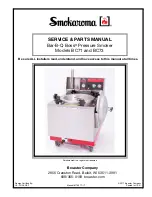
VESDA by Xtralis
VESDA VLC-400 Product Guide
www.xtralis.com
21
5.4
Capillary sampling
Capillary sampling consists of 8mm OD flexible tubes up to 2m long, running from the main pipe work in place
of standard sampling holes. Longer capillary tubes (up to 8m long) may be used but system performance must
be verified using the ASPIRE2 pipe modeling software.
The following figure illustrates capillary sampling.
Figure 5-3: Capillary Sampling
5.5
Pipework Installation
The following points should be considered when installing the sampling pipe:
l
Aspirating Pipe should only be installed by a competent contractor
l
Various pipe materials and colors may be used but the most common is PVC or ABS in red or white.
Smooth bore tube is preferable.
l
All pipe runs must be adequately supported with appropriate clips.
l
Avoid the use of sharp elbows – use “slow” bends for 90 degrees.
l
Where pipe must be removable for maintenance access use appropriate socket unions.
l
In environments with large temperature variations expansion and contraction of the pipe should be
considered. The pipe work layout and clips must be able to accommodate any likely movement. For
example ABS pipe expands by 0.1% with every 10ºC increase in temperature.
l
All joints must be airtight – this is typically achieved on plastic pipe using suitable adapters and
adhesives.
l
Allow sufficient movement in the pipe at the detector to facilitate removal for maintenance. A tapering of
the air inlet port prevents the pipe from being inserted beyond 15mm (5/8in).
l
DO NOT USED ADHESIVE ON THE PIPE JOINT ENTERING THE DETECTOR
l
All pipes should be clearly marked as “Aspirating Detector Pipe” or equivalent.
l
All sampling holes should be clearly marked. It is advisable to do this as each hole is drilled to avoid any
misunderstandings.
l
Ensure that swarf and installation debris is cleared from the pipe work before connecting the pipe to the
detector. This can be achieved by using an industrial vacuum cleaner prior to making the connection.
On installations where the detector is in the inverted orientation there may be a risk of objects falling into the
exhaust port. It may be prudent to install short length of exhaust pipe to eliminate the risk.
Warning:
l
THE PERFORMANCE OF THIS SYSTEM IS DEPENDENT UPON THE PIPE NETWORK.
l
ANY EXTENSIONS OR MODIFICATIONS TO THE DESIGNED INSTALLATION MAY CAUSE
IMPROPER OPERATION.
l
OPERATIONAL EFFECTS OF SUCH CHANGES SHALL BE VERIFIED USING ASPIRE2.
Содержание VESDA VLC-400
Страница 1: ...VESDA VLC 400 Product Guide June 2014 Document 03494_11 Part Number 18938...
Страница 2: ......
Страница 8: ...VESDA VLC 400 Product Guide VESDA by Xtralis 2 www xtralis com This page is intentionally left blank...
Страница 10: ...VESDA VLC 400 Product Guide VESDA by Xtralis 4 www xtralis com This page is intentionally left blank...
Страница 24: ...VESDA VLC 400 Product Guide VESDA by Xtralis 18 www xtralis com This page is intentionally left blank...
Страница 28: ...VESDA VLC 400 Product Guide VESDA by Xtralis 22 www xtralis com This page is intentionally left blank...
Страница 30: ...VESDA VLC 400 Product Guide VESDA by Xtralis 24 www xtralis com This page is intentionally left blank...
Страница 38: ...VESDA VLC 400 Product Guide VESDA by Xtralis 32 www xtralis com This page is intentionally left blank...
Страница 42: ...VESDA VLC 400 Product Guide VESDA by Xtralis 36 www xtralis com This page is intentionally left blank...
















































